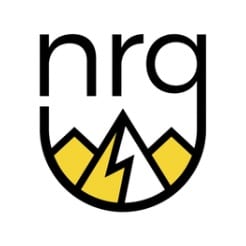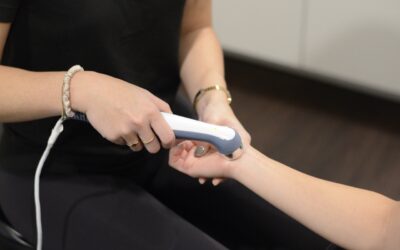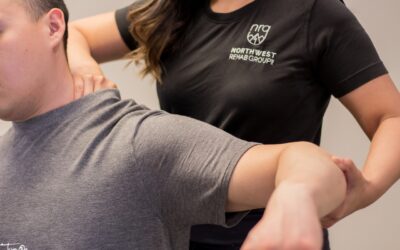I. Introduction
Arthritis is a term used to describe a group of conditions that cause inflammation in one or more joints in the body. This inflammation can cause pain, stiffness, and difficulty moving the affected joint(s), making daily activities and mobility challenging.
According to the Arthritis Society of Canada, it is estimated that 1 in 5 Canadians live with arthritis, which represents approximately 6 million individuals in the country. The most common forms of arthritis in Canada are osteoarthritis, rheumatoid arthritis, and psoriatic arthritis. Arthritis can affect individuals of all ages, including children, and is a leading cause of disability and reduced quality of life.
While there are various treatments available to manage arthritis, including medication and surgery, physiotherapy has been shown to be a highly effective and non-invasive way to manage symptoms. Physiotherapy is a form of treatment that involves physical exercises and techniques that aim to improve physical function, reduce pain, and promote overall wellness.
Physiotherapy can help manage arthritis symptoms by targeting the affected joints and surrounding tissues, improving the range of motion, strengthening muscles, and reducing pain and inflammation. Physiotherapy can also help individuals with arthritis maintain an active and healthy lifestyle, allowing them to continue performing daily activities with less pain and discomfort.
This article will explore the best practices for arthritis management with physiotherapy, including specific techniques and success stories of individuals who have improved their quality of life through physiotherapy treatment. We hope that this article will provide valuable information and encourage individuals with arthritis to consider physiotherapy as a treatment option.
II. Best Practices for Arthritis Management with Physiotherapy
Several physiotherapy techniques can be used to manage arthritis symptoms, including exercise therapy and manual therapy. Exercise therapy involves physical activity and movement designed to strengthen muscles, increase flexibility, and improve overall physical function. It can include a range of activities, such as aerobic exercise, strength training, and balance exercises.
Manual therapy is a technique that involves the use of hands-on techniques to manipulate joints and soft tissues. This can include joint mobilization, soft tissue massage, and myofascial release. Manual therapy can help reduce pain, improve the range of motion, and increase flexibility in the affected joints.
Regular exercise is an essential component of arthritis management with physiotherapy. Exercise can help reduce stiffness, increase flexibility, and improve joint function. It can also help individuals maintain a healthy weight, which can alleviate pressure on the joints and reduce pain. Additionally, exercise can improve overall cardiovascular health, which is especially important for individuals with arthritis who are at higher risk for heart disease.
Joint mobilization is another important aspect of physiotherapy for arthritis management. This technique involves the use of gentle movements to stretch and mobilize the affected joint. Joint mobilization can help increase the range of motion, reduce stiffness, and improve overall joint function.
Pain management is also a key component of arthritis management with physiotherapy. Physiotherapists can use a range of techniques to help manage pain, including heat and cold therapy, electrical stimulation, and acupuncture. They can also provide advice on lifestyle changes and modifications that can help reduce pain and improve the overall quality of life.

Choosing a qualified physiotherapist and creating a personalized treatment plan are crucial for effective arthritis management with physiotherapy. A physiotherapist with experience in arthritis management can help develop a treatment plan tailored to the individual’s needs and goals. They can also provide guidance on home exercises and lifestyle modifications that can complement in-clinic treatment.
III. Success Stories
Physiotherapy has helped many individuals manage their arthritis symptoms and improve their quality of life.
These success stories highlight how physiotherapy can help improve arthritis symptoms and quality of life. Physiotherapy can provide both short-term and long-term benefits, including reduced pain and stiffness, increased mobility and flexibility, and improve overall physical function. It can also help individuals maintain an active and healthy lifestyle, which can have a positive impact on their mental health and well-being. By working with a qualified physiotherapist and developing a personalized treatment plan, individuals with arthritis can achieve an improved quality of life and better manage their symptoms over the long term.
Carol, from Seattle, Washington, was diagnosed with osteoarthritis in her knees and hips, making it difficult to perform daily activities without pain. She started working with a physiotherapist who created a personalized treatment plan for her that included exercises to strengthen her muscles and improve her mobility. After several months of treatment, Carol noticed significant improvements in her pain and mobility and was able to resume activities that she had previously given up due to her arthritis.
Source: Arthritis Foundation – “Physical Therapy for Arthritis”
John from Toronto, Canada, had rheumatoid arthritis in his hands and wrists, making it difficult to grip objects and perform daily tasks. He began working with a physiotherapist who used manual therapy techniques to reduce his pain and inflammation and provided him with exercises to improve his grip strength and range of motion. After several weeks of treatment, John noticed a significant reduction in his pain and an improvement in his ability to perform daily activities.
Source: Physiotherapy Alberta – “Physiotherapy for Rheumatoid Arthritis”
Samantha from Sydney, Australia, was diagnosed with psoriatic arthritis, which caused pain and stiffness in her joints and made it difficult for her to move without discomfort. She started working with a physiotherapist who provided her with exercises to improve her flexibility and range of motion and pain management techniques to help her manage her symptoms. After several months of treatment, Samantha noticed a significant reduction in her pain and stiffness and was able to return to activities that she had previously given up due to her arthritis.
Source: Australian Physiotherapy Association – “Physiotherapy for Arthritis”

IV. Physiotherapy Techniques for Arthritis Management
Physiotherapy offers a range of techniques for arthritis management, each of which can be tailored to meet the specific needs of the individual. Here are some of the common physiotherapy techniques used for arthritis management:
- Range-of-motion exercises: Range-of-motion exercises are used to improve joint mobility and flexibility. These exercises involve moving the affected joint through its full range of motion, which can help reduce stiffness and pain. Range-of-motion exercises can be passive, where the physiotherapist moves the joint for the individual, or active, where the individual moves the joint themselves.
- Strengthening exercises: Strengthening exercises are used to improve muscle strength and endurance. Stronger muscles can help support the affected joint and reduce the stress placed on it. Strengthening exercises can be done with resistance bands, weights, or bodyweight exercises.
- Soft tissue massage: Soft tissue massage is a hands-on technique that involves applying pressure to muscles and other soft tissues to reduce tension and promote relaxation. Soft tissue massage can help reduce pain, improve circulation, and promote healing in the affected joint.
- Joint mobilization: Joint mobilization is a technique used to improve joint mobility by gently moving the joint through its natural range of motion. This technique can help reduce stiffness and pain and improve joint function.
- Pain management techniques: Pain management techniques are used to help individuals manage their pain and discomfort. These techniques may include heat or cold therapy, electrical stimulation, or other modalities.
By using these physiotherapy techniques, individuals with arthritis can improve their pain, mobility, and overall physical function. A qualified physiotherapist can develop a personalized treatment plan that includes a combination of these techniques to meet the specific needs of the individual. Over time, physiotherapy can help individuals with arthritis manage their symptoms and improve their quality of life.
V. Conclusion
Arthritis is a chronic condition that can significantly impact an individual’s quality of life. However, physiotherapy offers a range of techniques that can help manage arthritis symptoms and improve overall physical function. By working with a qualified physiotherapist, individuals with arthritis can develop a personalized treatment plan that includes a combination of range-of-motion exercises, strengthening exercises, soft tissue massage, joint mobilization, and pain management techniques. Over time, physiotherapy can help reduce pain, improve mobility, and increase strength, which can lead to an overall improvement in quality of life.
If you are struggling with arthritis, seeking out physiotherapy as a treatment option is important. A qualified physiotherapist can work with you to develop a personalized treatment plan that addresses your specific needs and goals. By taking an active role in your arthritis management and working closely with your healthcare team, you can achieve greater physical function and overall well-being.
In conclusion, physiotherapy is a valuable treatment option for individuals with arthritis. By incorporating physiotherapy techniques into your arthritis management plan, you can improve your pain, mobility, and quality of life.
Sources used in the article:
“The Arthritis Foundation’s Guide to Good Living with Rheumatoid Arthritis” by Dorothy Foltz-Gray
This book includes stories from individuals with rheumatoid arthritis who have benefited from physiotherapy and other treatments. It also provides practical advice on managing symptoms, including exercises and physiotherapy techniques.
“Arthritis: What Exercises Work” by Dava Sobel
This book features stories of individuals with arthritis who have improved their symptoms with exercise and physiotherapy. It also provides a comprehensive guide to exercise and physiotherapy techniques for arthritis management.
“Osteoarthritis: Diagnosis and Medical/Surgical Management” by Roland W. Moskowitz and Steven R. Goldring
This book provides an in-depth overview of osteoarthritis, one of the most common forms of arthritis. It covers a range of topics, including the pathophysiology of osteoarthritis, diagnostic techniques, and medical and surgical management options. It also includes information on physiotherapy and other non-pharmacologic treatment options.
Rheumatoid Arthritis: Plan to Win – Cheryl Koehn
This book provides a comprehensive guide to rheumatoid arthritis, including information on the benefits of physiotherapy and exercise for managing symptoms. It covers a range of topics, including the causes and symptoms of rheumatoid arthritis, medication and treatment options, and strategies for living with the condition.
“Oxford Textbook of Rheumatology” by Richard A. Watts, Philip Conaghan, Christopher Denton, et al.
This book is a comprehensive resource for diagnosing and managing rheumatic conditions, including arthritis. It covers a range of topics, including the pathophysiology of rheumatic conditions, diagnostic techniques, and medical and non-pharmacologic treatment options. It also includes information on physiotherapy and other rehabilitation strategies.
These books can be found at many major book retailers and online bookstores.






0 Comments